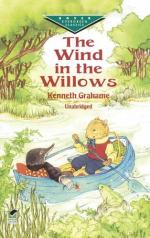|
This section contains 13,637 words (approx. 46 pages at 300 words per page) |

|
SOURCE: "Kenneth Grahame's The Wind in the Willows: A Companionable Vitality," in Touchstones: Reflections on the Best in Children's Literature, Vol. 1, Children's Literature Association, 1985, pp. 96-105.
SOURCE: "Kenneth Grahame and the Search for Arcadia" and "The Wind in the Willows," in Secret Gardens: A Study of the Golden Age of Children's Literature, Houghton Mifflin Company, 1985, pp. 115-25, 151-69.
Anyone studying Grahame's life and work will quickly find himself indebted to Peter Green's immensely skilful biography of him (1959), arguably the best book ever written about an English children's author. Nevertheless, Green may be wrong in one of his major conclusions. Chiefly on the evidence of Grahame's two books about childhood, The Golden Age (1895) and Dream Days (1898), he concludes that Grahame had a largely unhappy childhood, marked by emotional deprivation, and suggests that it was this which largely influenced him to write these two books—and so, indirectly, to become...
|
This section contains 13,637 words (approx. 46 pages at 300 words per page) |

|


